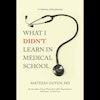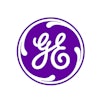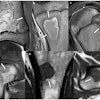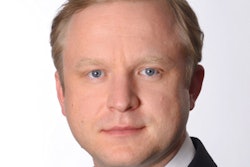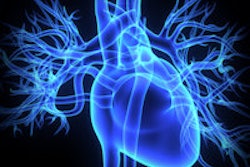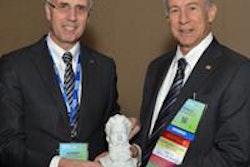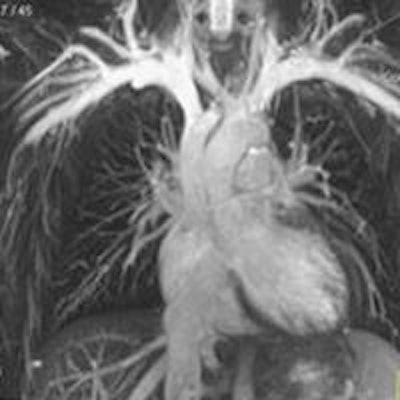
The National Cohort (Nationale Kohorte [NAKO]) is the biggest health study ever undertaken in Germany, and over the next few years it will be investigating 200,000 men and women between the ages of 20 and 69. This is the first-ever project on such a scale, even for radiology, and 30,000 subjects will also undergo MRI scans.
The aim of the study is to carry out detailed research into typical diseases in the population, in order to improve prevention, early recognition, and treatment of cancer, dementia, diabetes, etc. To this end, a comprehensive study protocol has been developed, covering not only medical examinations and lifestyle enquiries, but also socioeconomic and psychosocial aspects. Biospecimens also will be collected.


The images show examples of the NAKO whole-body MRI protocol. A: 3D magnetization-prepared rapid acquisition gradient-echo (MP RAGE) sequence of the brain for volumetric reconstructions. B: Plain thoracic angiography. C: Three- and four-chamber views of the heart using 2D cine steady-state free precession (SSFP). D: T1 Dixon sequence over the upper part of the body for fatty tissue differentiation. E: A T2-weighted turbo spin-echo (TSE) scan of the entire spinal column. In addition, the MRI protocol includes, but does not illustrate, resting-state functional MRI and 2D fluid-attenuated inversion-recovery (FLAIR) scans of the brain, modified look-locker inversion recovery (MOLLI) sequence of the heart, 3D proton-density fat-saturated image of the entire hip, a T2 half-Fourier acquisition single-shot turbo spin-echo (HASTE) scan of the lungs, and a multiecho volumetric interpolated breath-hold examination (VIBE) liver scan. Reprinted with permission of RSNA.
According to Dr. Karl-Heinz Jöckel, chair of the National Cohort Association (Verein Nationale Kohorte), "This means that we are dealing here with a major interdisciplinary health project. Working with study participants, scientists will be able to bring about lasting improvements to health in Germany, in keeping with the study slogan: "Let's work together for a healthier future" ("Gemeinsam forschen für eine gesundere Zukunft")."
By the end of March 2015, more than 16,000 citizens from all over the country had taken part in the study, and more than 1,200 of these participants also took part in the MRI study. The National Cohort is being financed to the tune of 210 million euros by the German Federal Ministry for Training and Research (Bundesministerium für Bildung und Forschung), the 14 participating federal regions, and the Helmholtz Association of German Research Centers (Helmholtz Gemeinschaft Deutscher Forschungszentren). About 21 million euros from that funding will be going into the radiology side of the study.
Highlight on MRI
In addition to providing a morphological image of the brain (T1-weighted and fluid-attenuated inversion recovery [FLAIR]), the investigation will also include a functional MRI scan. There will also be functional cardiovascular sequences, plain thoracic MR angiography, full-body Dixon sequences, and a T2 half-Fourier acquisition single-shot turbo spin-echo (HASTE) scan of the chest and upper abdomen. Musculoskeletal imaging includes a sagittal T2 scan of the spinal column and high-resolution imaging of the sacroiliac and hip joints.
The fact that the investigation is designed to be purely scientific and that it is not a complete organ-based study poses a challenge. All investigations will be assessed by specialist radiologists, using predetermined algorithms. Given that the study has a scientific orientation, it will not be possible to undertake medical diagnoses and, in most cases, neither will it be possible to reach any final conclusions where unusual findings come to light.
Working in a manner similar to that in which biobanks are run, MR images will be assembled into a gigantic imaging repository, to which scientists from all disciplines and from around the world will have access for research purposes. The expectation is that findings from these investigations, coupled with data collected elsewhere in the study, will yield valuable information relating to ways in which genetic factors, environmental conditions, and lifestyles play a joint part in the onset of various disorders. Subclinical results will be of greatest interest here.
The MRI part of the NAKO is being organized by an interdisciplinary scientific consortium, the MR Imaging Core, under the direction of Dr. Fabian Bamberg (Tübingen University and Ludwig Maximilian University [LMU], Munich). The Imaging Core is coordinating all aspects of MRI investigations at the five MRI study centers; training, study monitoring, and general coordination is being handled by Bamberg's LMU Munich team under the direction of Dr. Thomas Hendel.
Other experts are responsible for some key tasks within the MR Imaging Core. Fraunhofer MEVIS, Bremen (Dr. Matthias Günther) has developed new and unique solutions for study-related MRI data management. Greifswald University of Medicine (Drs. Henry Völzke and Norbert Hosten) are providing guidance on quality assurance issues arising from NAKO's multicentric and epidemiological approach.
The radiology department at Heidelberg University Clinic (Dr. Hans-Ulrich Kauczor) is dealing with the extremely complex ethical issues arising from random results. Responsibility for obtaining consent from subjects for subject-related data protection and open-ended storage of MRI image data rests with Central Data Management for the National Cohort (Drs. Wolfgang Hoffmann and Rudolf Kaaks).
Dedicated state-of-the-art MRI scanners (Skyra 3T from Siemens Healthcare) have already been installed at four out of the total of 18 NAKO study centers. To date, 1,250 subjects have already been scanned, in Augsburg, Berlin, Essen, and Neubrandenburg. A further MRI system is due to come into service in Mannheim in the autumn of 2015.
Positive feedback
MRI scanning takes roughly one hour. Most of the responses from participants have been positive, despite the fact that this is in addition to the three and half to six hours required for investigations at the epidemiological study center. The main motives for participating are an interest in personal health, curiosity, and commitment to a good cause. To deal with any worries that MRI subjects may have, a special explanatory video has been developed, showing what happens during the investigation and providing information on MRI scanning.
"I was a bit anxious at first because the scanner is so narrow, but the video was really useful in helping me to see in advance exactly what the coils do and all that," said MRI subject Ms. C. "I was particularly impressed by the friendly staff, who looked after me very well and who kept asking if everything was alright."
The results will be of great relevance to radiology in many ways. Firstly, quality assurance and workflow standardization are central issues, from which clinical care will also be able to derive extensive benefits. Furthermore, evidence-based data to support the value of preventive imaging, including new imaging biomarkers and comprehensive cross-sectional and longitudinal data will be generated.
"In many ways, our project is so far unique and calls for specific solutions, particularly in respect of data processing, quality assurance, and dealing with random results," Bamberg said. "We have been successful in this, inasmuch as we have developed and implemented appropriate procedures at the MR Imaging Core. Because we are moving into somewhat uncharted territory, established algorithms will need to be optimized and adapted here and there as we move ahead."
Editor's note: This article is an edited version of a translation of an article published in German online by the German Radiological Society (DRG, Deutsche Röntgengesellschaft). Translation by Syntacta Translation & Interpreting. To read the original article, visit the DRG website. Copyright is retained by Nationale Kohorte.
